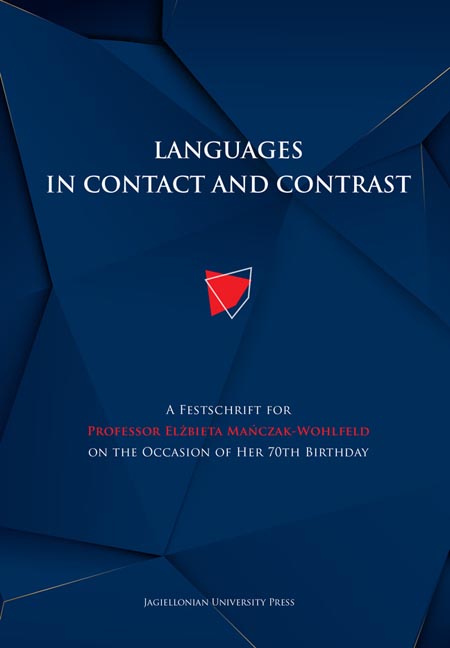 Languages in Contact and Contrast
Languages in Contact and Contrast Published online by Cambridge University Press: 14 October 2023
The words listed in the title seem to be rather uninteresting Turkish loanwords in some Balkan languages. In reality, however, they offer quite a lot of inspiration for both Slavic and Turkish linguistics.
It was Petar Skok who principally correctly classified the Croatian and Serbian (= CS) word nȅimār ∼ neìmār ∼ màjmor along with Bosnian naimar as reflexes of a Turkish etymon (Skok 1972: 358 s.v. màjmor). Forty years later the topic was also discussed by Snežana Petrović (2012) in her detailed study. The problem is, however, that both scholars take different stances.
Skok’s explanation can be rendered in two claims: 1) the Turkish etymon was meymar (< Arabic mi˓mar [!, pro: mi˓mār = معمار ] ‘architect’); 2) the CS n- results from a dissimilation of nasal consonants: Tksh. m – m > CS n – m. We are skipping in what follows the explanation of -or (in Serb. majmor) as the result of a contamination of Tksh. meymar with Serb. majstor ‘master, foreman’ because it does not influence our understanding of the etymology and borrowing channels of the Turkish word. The more so because the form majmor occurs in one folk riddle only, and, in addition, it forms a rhyme with another Serbian word in -or, i.e., pet majstora, pet majmora ‘five foremen, five architects’ (Petrović 2012: 329). It is only surprising that Skok chose exactly that hapax as a headword of the dictionary entry.
Petrović’s opinion is different: 3) the Turkish etymon was mimar (< Arabic mi˓mār) and further: > Serb. *nimar > neimar (Petrović 2012: 328, 333); 4) the Serbian n- could have resulted from a contamination of the Turkish etymon mimar with Serbian naimati, najmiti ‘to hire, engage’ (ibid.: 330).
It is conspicuous that one question has been omitted in both studies, namely the alternation -e- ∼ -a- in the first syllable (neimar ∼ maimar). It is true, Petrović could easily have construed the -a- variants as results of the influence of the Serbian verb najmiti. However, the usual Serbian variant has -e- (neimar), while Serb.
To save this book to your Kindle, first ensure [email protected] is added to your Approved Personal Document E-mail List under your Personal Document Settings on the Manage Your Content and Devices page of your Amazon account. Then enter the ‘name’ part of your Kindle email address below. Find out more about saving to your Kindle.
Note you can select to save to either the @free.kindle.com or @kindle.com variations. ‘@free.kindle.com’ emails are free but can only be saved to your device when it is connected to wi-fi. ‘@kindle.com’ emails can be delivered even when you are not connected to wi-fi, but note that service fees apply.
Find out more about the Kindle Personal Document Service.
To save content items to your account, please confirm that you agree to abide by our usage policies. If this is the first time you use this feature, you will be asked to authorise Cambridge Core to connect with your account. Find out more about saving content to Dropbox.
To save content items to your account, please confirm that you agree to abide by our usage policies. If this is the first time you use this feature, you will be asked to authorise Cambridge Core to connect with your account. Find out more about saving content to Google Drive.